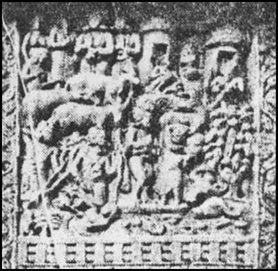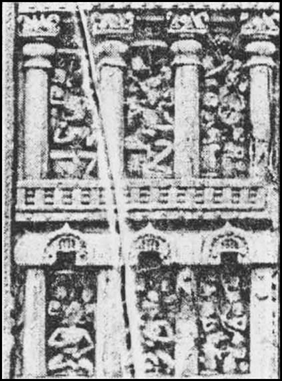Thinkers, Beliefs And Buildings
Gautam Buddha opposed casteism and allowed people of different social groups to join Buddhism and Sangha. Explain.
Buddha was a great religious teacher as well as pioneer social reformer. He did not favour casteism. He believed in equality of all human being.
The Buddha's followers came from many social groups. They included kings, wealthy men, and gahapatis, and also humbler folk: workers, slaves and craftspeople. Once within the sangha, all were regarded as equal, having shed their earlier social identities on becoming bhikkhus and bhikkhunis. The internal functioning of the sangha was based on the traditions of the gana sanghas where discussions took place to forge a consensus. If that failed decisions were taken following a vote on the subject.
Moreover the Buddha regarded the social world as the creation of humans rather than of divine origin. Individual effort was expected to transform social relations. The Buddha emphasised individual agency and righteous action as the means to escape from the cycle of rebirth and attain self-realisation and nibbana, literally the extinguishing of the ego and desire – and thus end the cycle of suffering for those who renounced the world.
Sponsor Area
Some More Questions From Thinkers, Beliefs And Buildings Chapter
“Buddhism grew rapidly both during the life time of the Buddha and also after his death.” Justify the statement.
Explain the variety of sources used by the historians to reconstruct histories of religious traditions.
Were the ideas of the Upanishadic thinkers different from those of the fatalists and materialists? Give reasons for your answer.
Summarise the central teachings of Jainism.
Discuss the role of the begums of Bhopal in preserving the stupa at Sanchi.
Or
“The Begums of Bhopal played a significant role in preserving the remains of stupa at Sanchi.” Support this statement with suitable evidence.
Read this short inscription and answer the questions that follow:
In the year 33 of the maharaja Huvishka (a Kushana ruler), in the first month of the hot season on the eighth day, a Bodhisatta was set up at Madhuvanaka by the bhikkhuni Dhanavati, the sister’s daughter of the bhikkhuni Buddhamita, who knows the Tipitaka, the female pupil of the bhikkhu Bala, who knows the Tipitaka, together with her father and mother.
A. How did Dhanavati date her inscription?
B. Why do you think she installed an image of the Bodhisatta?
C. Who were the relatives she mentioned?
D. What Buddhist text did she know?
E From whom did she learn this text?
Why do you think women and men joined the Sangha?
To what extent does knowledge of Buddhist literature help in understanding the sculpture at Sanchi?
Figures I and II. are two scenes from Sanchi. Describe what you see in each of them, focusing on the architecture, plants and animals, and the activities. Identify which one shows a rural scene and which an urban scene, giving reasons for your answer.
Fig.: I

Fig. : II
Discuss the development in sculpture and architecture associated with the rise of Vaishnavism and Shaivism.
Mock Test Series
Sponsor Area
NCERT Book Store
NCERT Sample Papers
Sponsor Area